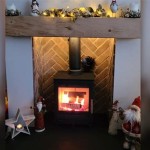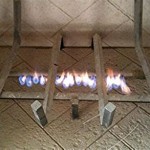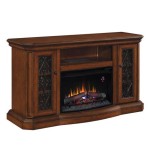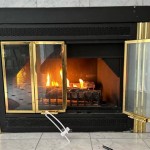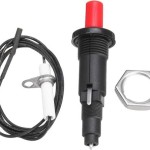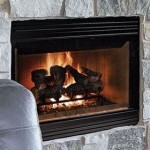Gas Fireplace Boxes: Understanding the Core of Your Hearth
Gas fireplace boxes, also known as firebox inserts or gas fireplace inserts, are the heart of a gas fireplace system. They represent the pre-fabricated or custom-built enclosure that houses the burner assembly, gas controls, and decorative elements like logs, glass, or stones. Understanding the components and functions of a gas fireplace box is crucial for homeowners considering installing a gas fireplace, replacing an existing one, or troubleshooting operational issues. This article provides a comprehensive overview of gas fireplace boxes, offering insight into their construction, types, key features, and factors to consider when selecting one.
A gas fireplace box serves several essential purposes. First and foremost, it contains the combustion process safely and efficiently. The firebox's construction is designed to withstand high temperatures and direct the heat produced by the burning gas into the room. Secondly, it provides a cavity for the burner assembly and all associated components, including the gas valve, pilot light, and ignition system. Thirdly, it offers a decorative backdrop for the flames and embers, enhancing the aesthetic appeal of the fireplace. Finally, a well-designed firebox contributes to the overall efficiency of the fireplace by optimizing airflow and promoting complete combustion.
Construction and Materials
The construction of a gas fireplace box is primarily dictated by safety regulations and efficiency standards. The materials used are selected for their ability to withstand high temperatures, resist corrosion, and provide structural integrity. Steel and cast iron are the most common materials used in firebox construction.
Steel fireboxes are typically constructed from heavy-gauge steel that is welded together to form a robust enclosure. Steel offers excellent strength and durability, and it can be easily formed into various shapes and sizes. The interior of a steel firebox is often coated with a heat-resistant paint or enamel to protect the steel from corrosion and improve its reflectivity. Stainless steel is also sometimes used, especially in coastal areas where corrosion from salt air is a concern.
Cast iron fireboxes are more traditional and offer excellent heat retention properties. Cast iron is a dense material that absorbs and radiates heat slowly, providing a more consistent and comfortable warmth. Cast iron fireboxes are typically heavier and more expensive than steel fireboxes, but they can offer a longer lifespan and a more classic aesthetic. Cast iron fireboxes may require regular maintenance to prevent rust, especially in humid environments.
Refractory materials, such as firebrick or ceramic fiber panels, are often used to line the interior of the firebox. These materials are designed to withstand extremely high temperatures and reflect heat back into the firebox, improving efficiency and protecting the steel or cast iron from damage. Refractory materials can also be used to create a decorative pattern or texture on the interior of the firebox.
Types of Gas Fireplace Boxes
Gas fireplace boxes come in a variety of types, each designed to meet specific installation requirements and aesthetic preferences. The primary types include: direct vent, vent-free, and B-vent.
Direct Vent Fireplace Boxes: Direct vent fireplaces are the most popular type due to their safety and efficiency. They utilize a sealed combustion chamber and a dual-vent system. One vent draws air from outside the home for combustion, while the other vent expels exhaust gases back outside. This sealed system prevents indoor air from being used for combustion, reducing the risk of carbon monoxide poisoning and improving efficiency. Direct vent fireplaces can be installed on an exterior wall or in the center of a room with proper venting. They offer a wide range of design options and heat output levels.
Vent-Free Fireplace Boxes: Vent-free fireplaces, also known as ventless fireplaces, do not require any venting to the outside. They burn gas very efficiently, producing minimal exhaust gases. However, they do release small amounts of water vapor, carbon dioxide, and other combustion byproducts into the room. Vent-free fireplaces are equipped with oxygen depletion sensors (ODS) that shut off the gas supply if the oxygen level in the room drops too low. While vent-free fireplaces offer convenience and installation flexibility, they are generally not recommended for people with respiratory problems or in tightly sealed homes. Local codes may also restrict or prohibit the installation of vent-free fireplaces. It is crucial to confirm with the local authority before considering this option.
B-Vent Fireplace Boxes: B-vent fireplaces use a single-wall vent to exhaust combustion gases into a chimney. They draw air from the room for combustion, which can reduce the efficiency of the fireplace and create a slight draft. B-vent fireplaces are typically less expensive than direct vent fireplaces, but they require an existing chimney or the installation of a new one. B-vent fireplaces are less common than direct vent models due to their reduced efficiency and safety concerns.
In addition to these primary types, there are also linear fireplaces, which feature a long, horizontal firebox, and see-through fireplaces, which have glass on both sides, allowing you to view the flames from two rooms. Each type offers unique design possibilities and installation considerations.
Key Features and Considerations
When selecting a gas fireplace box, several key features and considerations should be taken into account to ensure optimal performance, safety, and aesthetics.
Heat Output: The heat output of a gas fireplace is measured in British thermal units (BTUs). The appropriate heat output for a particular space depends on the size of the room, the insulation level, and the desired temperature. A fireplace with too much heat output can make the room uncomfortable, while a fireplace with too little heat output may not be sufficient to heat the space. Consulting with a qualified installer can help determine the appropriate BTU rating for a specific application.
Efficiency: The efficiency of a gas fireplace is the percentage of fuel that is converted into usable heat. Direct vent fireplaces are typically the most efficient, followed by B-vent fireplaces, and then vent-free fireplaces. Higher efficiency ratings translate into lower fuel costs and reduced emissions. Look for Energy Star-certified models to ensure optimal efficiency.
Ignition System: Gas fireplaces use various ignition systems, including standing pilot lights, electronic ignition, and intermittent pilot ignition. Standing pilot lights are the simplest and most reliable, but they consume gas continuously, even when the fireplace is not in use. Electronic ignition systems and intermittent pilot ignition systems only ignite the pilot light when the fireplace is turned on, saving energy and reducing fuel costs. Electronic ignition systems are typically more convenient, while intermittent pilot ignition systems are more reliable.
Flame Appearance: The appearance of the flames is a significant factor for many homeowners. Gas fireplaces are available with various flame patterns, colors, and heights. Some models feature adjustable flame heights and variable flame patterns. The type of decorative media used in the firebox, such as logs, glass, or stones, also affects the overall appearance of the flames. It's important to see the fireplace operating in person or view a video demonstration to assess the flame appearance before making a purchase.
Safety Features: Safety features are paramount when selecting a gas fireplace box. Look for models that include oxygen depletion sensors (ODS), which shut off the gas supply if the oxygen level in the room drops too low. Also, consider models with safety screens or barriers to prevent accidental contact with the hot glass. Always follow the manufacturer's installation instructions and local codes to ensure safe operation. Regular maintenance, including cleaning and inspection, is essential for maintaining the safety and efficiency of the fireplace.
Aesthetics: The aesthetic appeal of the gas fireplace box and its surrounding trim is an important consideration. Fireplace boxes are available in a wide range of styles, finishes, and sizes to complement any décor. Consider the overall design of the room and choose a fireplace box that complements the existing architectural features and furnishings. The trim or surround around the fireplace box can also be customized to create a unique and personalized look. Options include wood, stone, tile, and metal.
Installation Requirements: Installation requirements vary depending on the type of gas fireplace box and the venting system. Direct vent fireplaces typically require more complex installation procedures than B-vent or vent-free fireplaces. It is essential to hire a qualified installer to ensure that the fireplace is installed correctly and safely. A qualified installer will also be able to advise on the appropriate size and type of fireplace for the specific application.
Cost: The cost of a gas fireplace box can vary widely depending on the type, size, features, and brand. Direct vent fireplaces are typically more expensive than B-vent or vent-free fireplaces. Installation costs can also vary depending on the complexity of the installation and the local labor rates. It is important to obtain multiple quotes from different installers before making a decision. Consider the long-term costs of owning a gas fireplace, including fuel costs, maintenance costs, and potential repair costs.
By carefully considering these key features and considerations, homeowners can select a gas fireplace box that meets their needs in terms of performance, safety, aesthetics, and budget.

Rustic Gas Fireplace Inserts Kozy Heat

Gas Fireplace Inserts Fireplacesdirect Com

Gas Fireplace Inserts Napoleon Fireplaces

Contemporary Gas Fireplace Inserts Provide Several Benefits Kozy Heat Fireplaces

Procom Universal Ventless Firebox 170016 The Home Depot

Gas Fireplace Inserts Modern Burning Fort Collins Fireplaces

All About Gas Fireplace Inserts Advice We Love Fire

Gas Fireplace Inserts Xtrordinair Made In America

The Types Of Gas Fireplaces Gaithersburg Md Fireplace Service

Superior 36 Inch Vent Free Circulating Gas Firebox Vrt3536 North Country Fire

